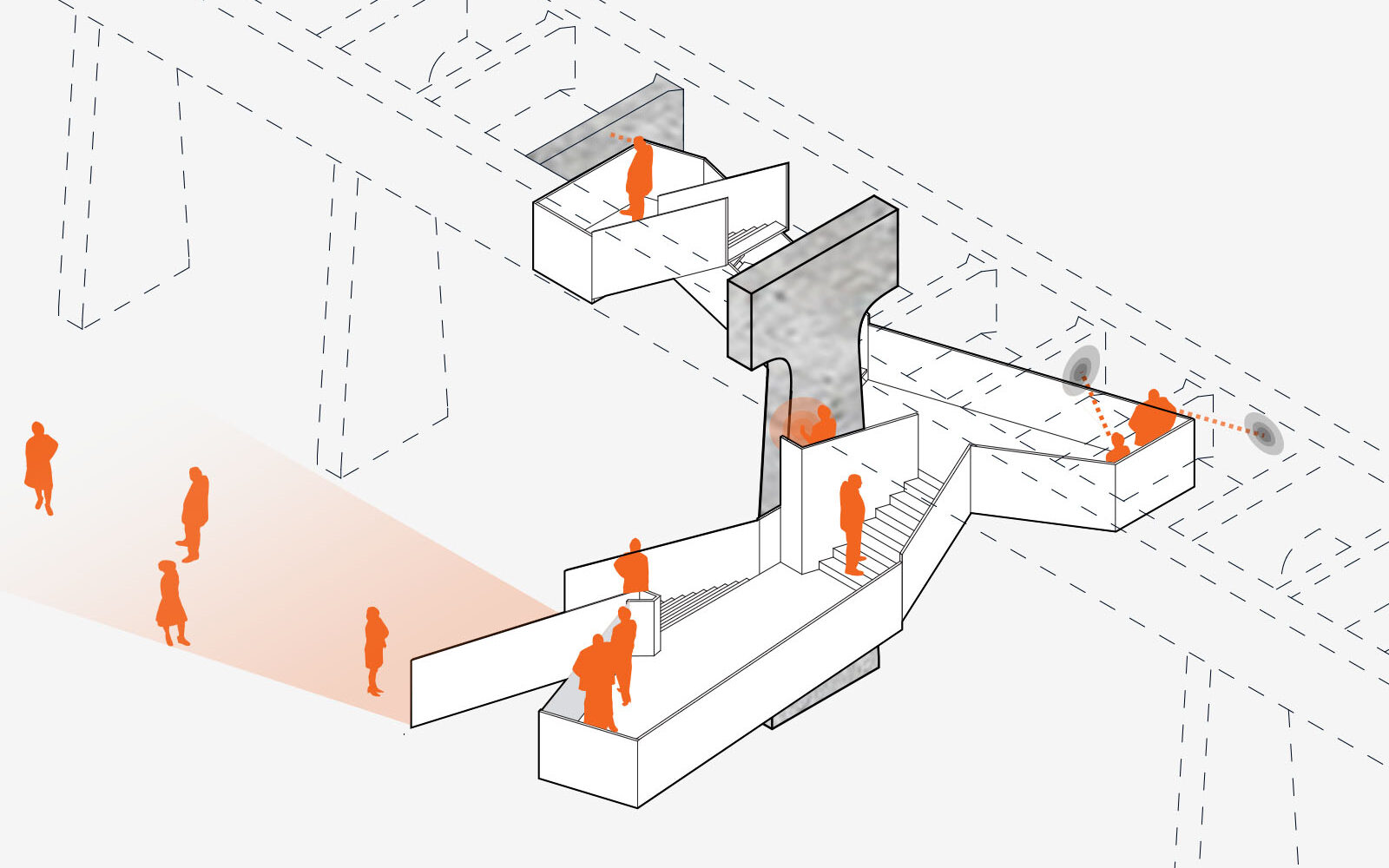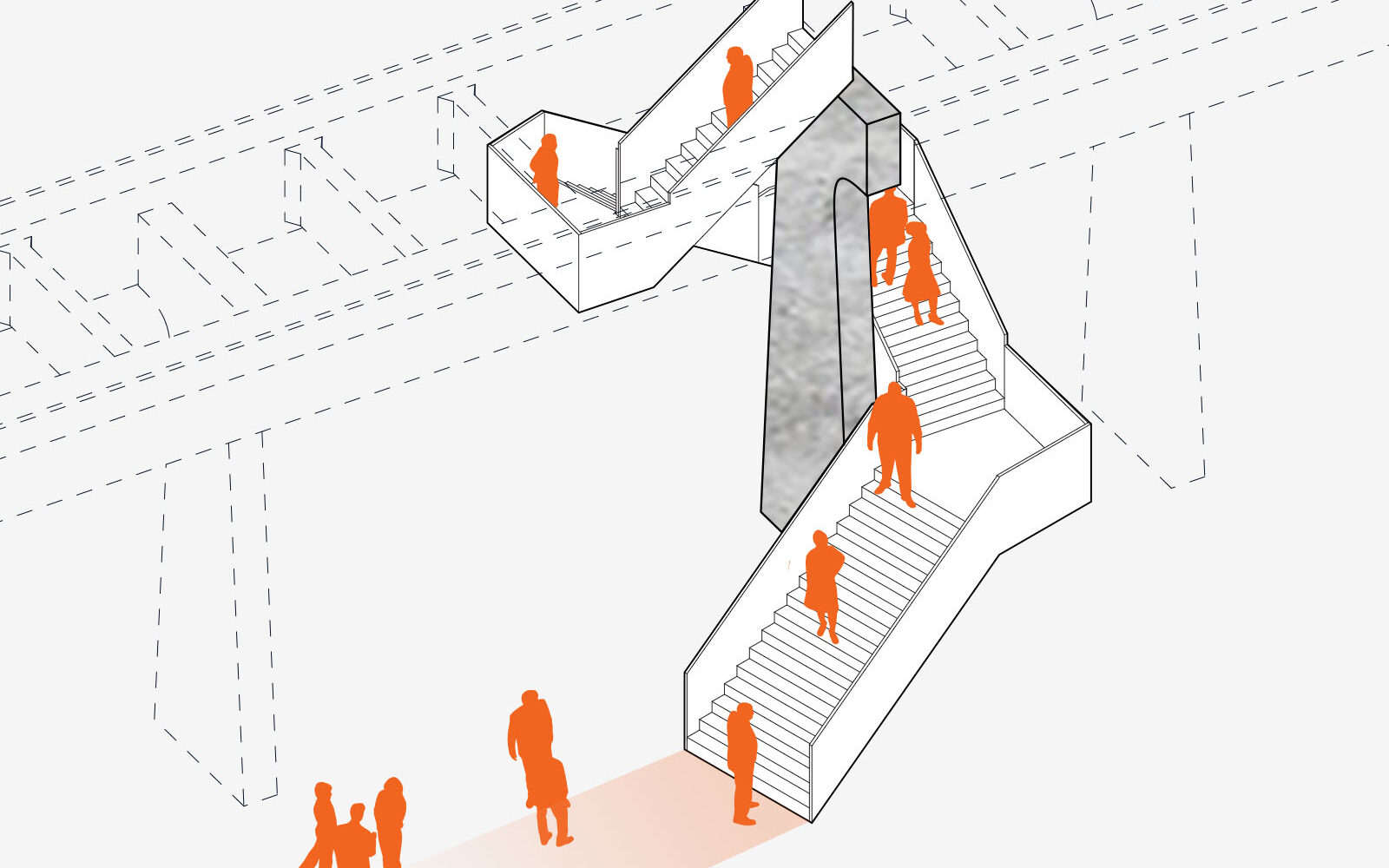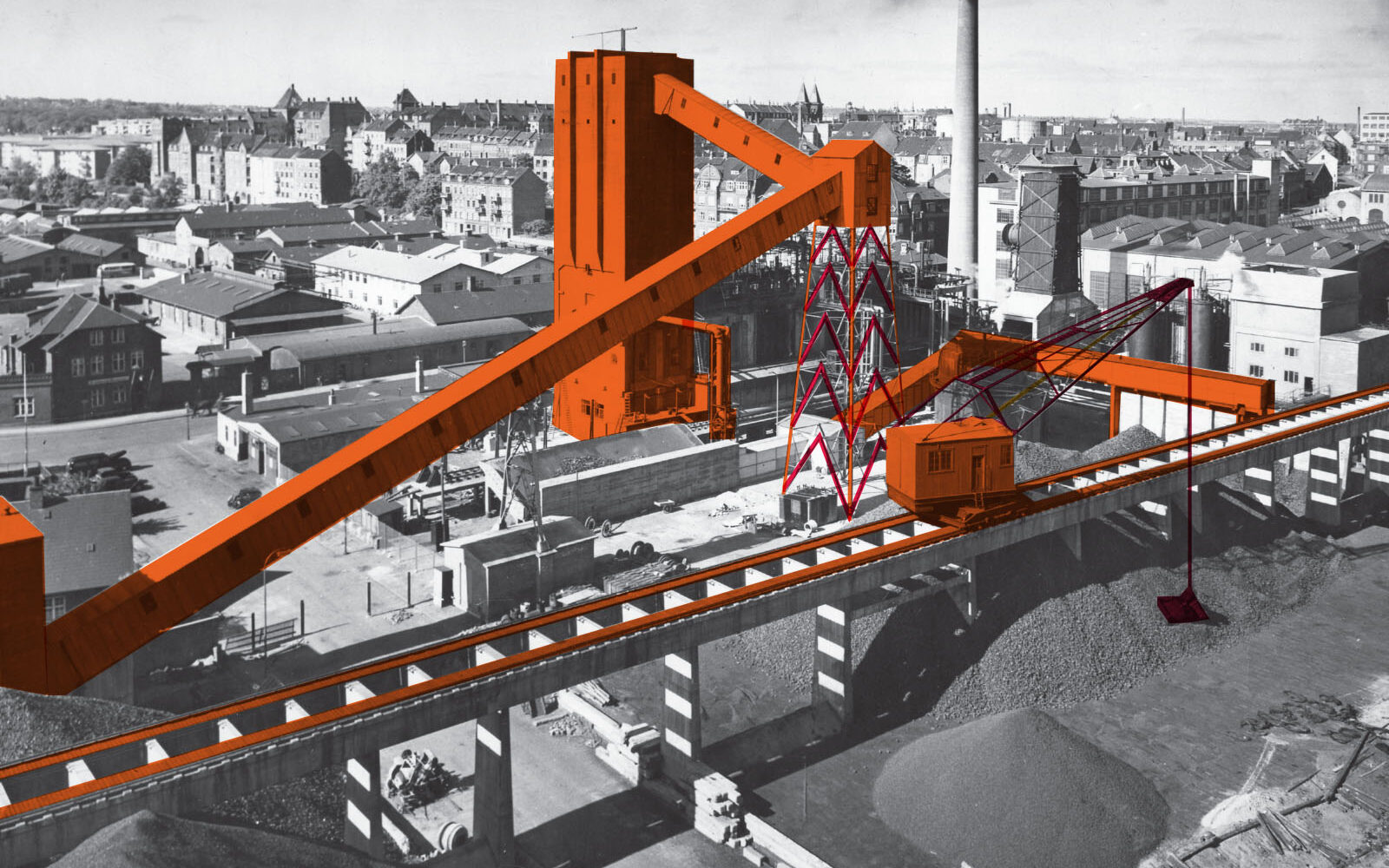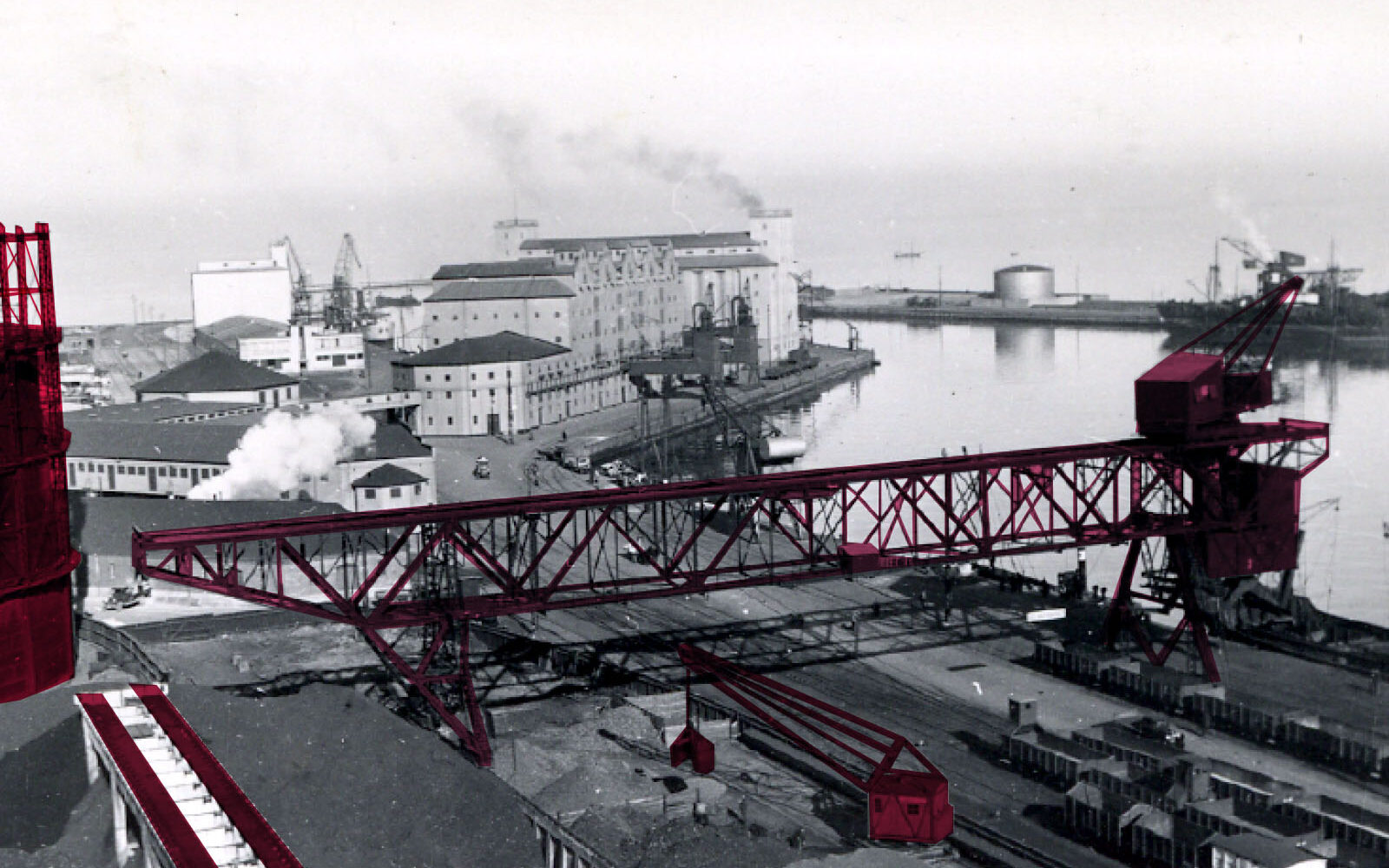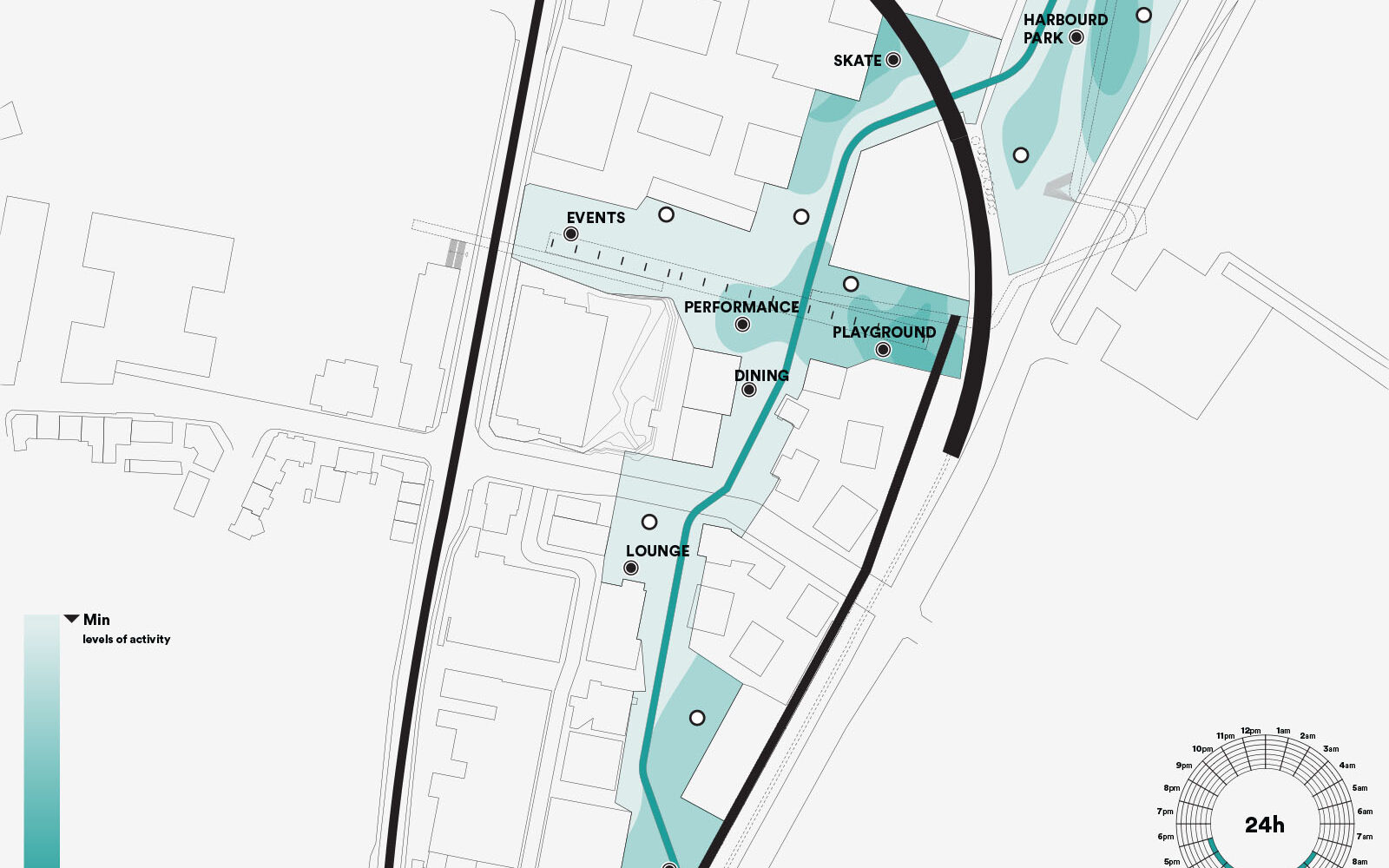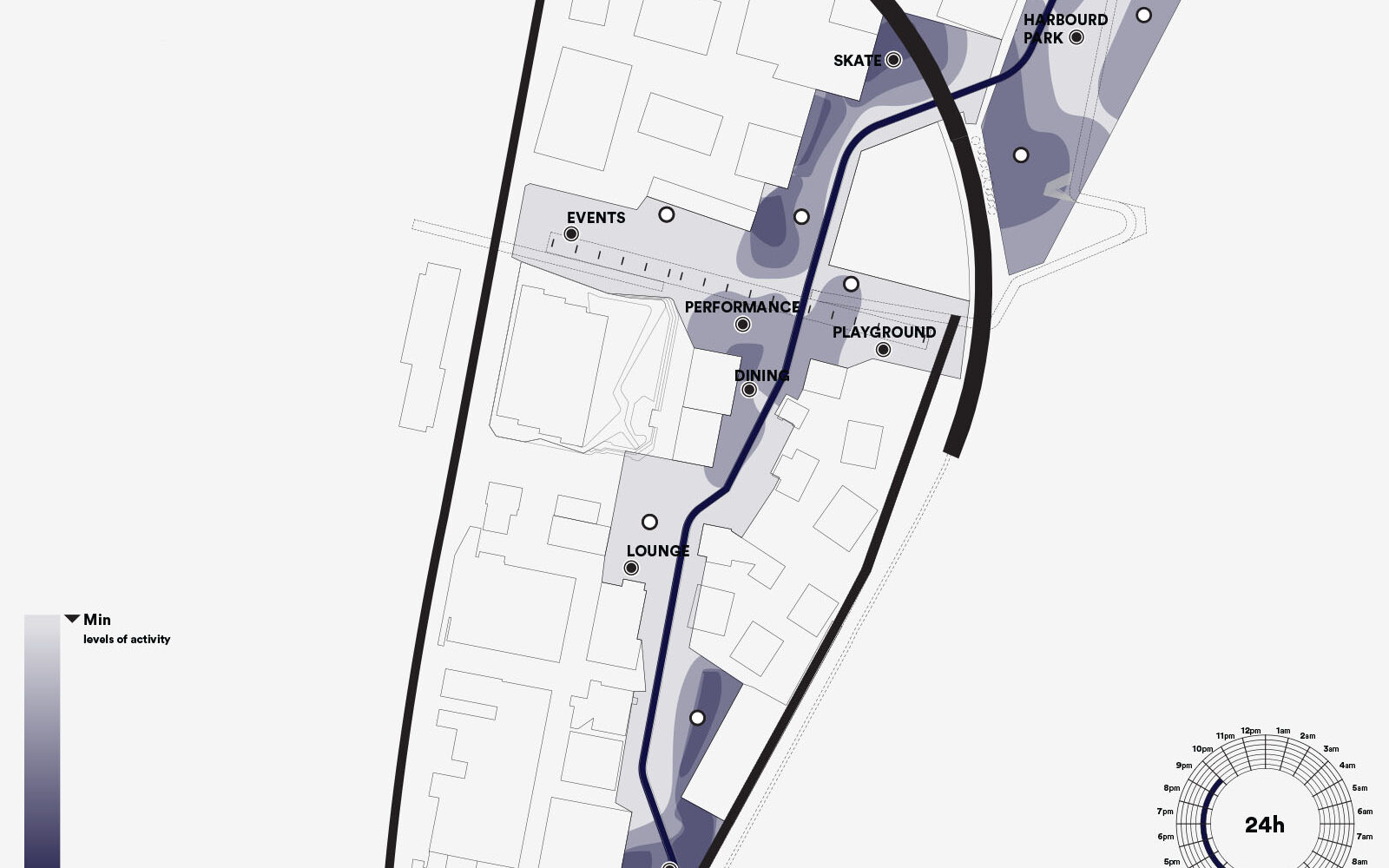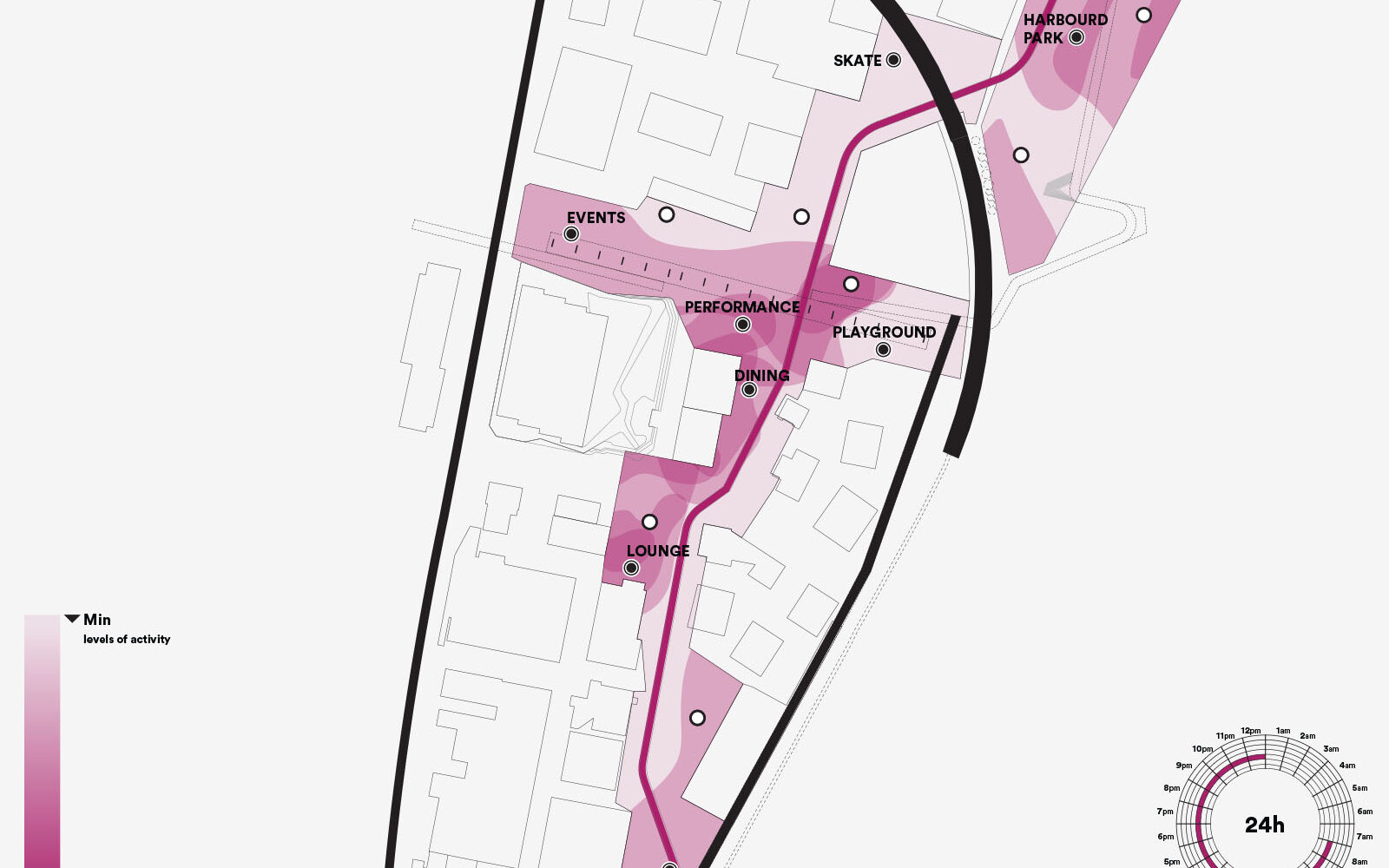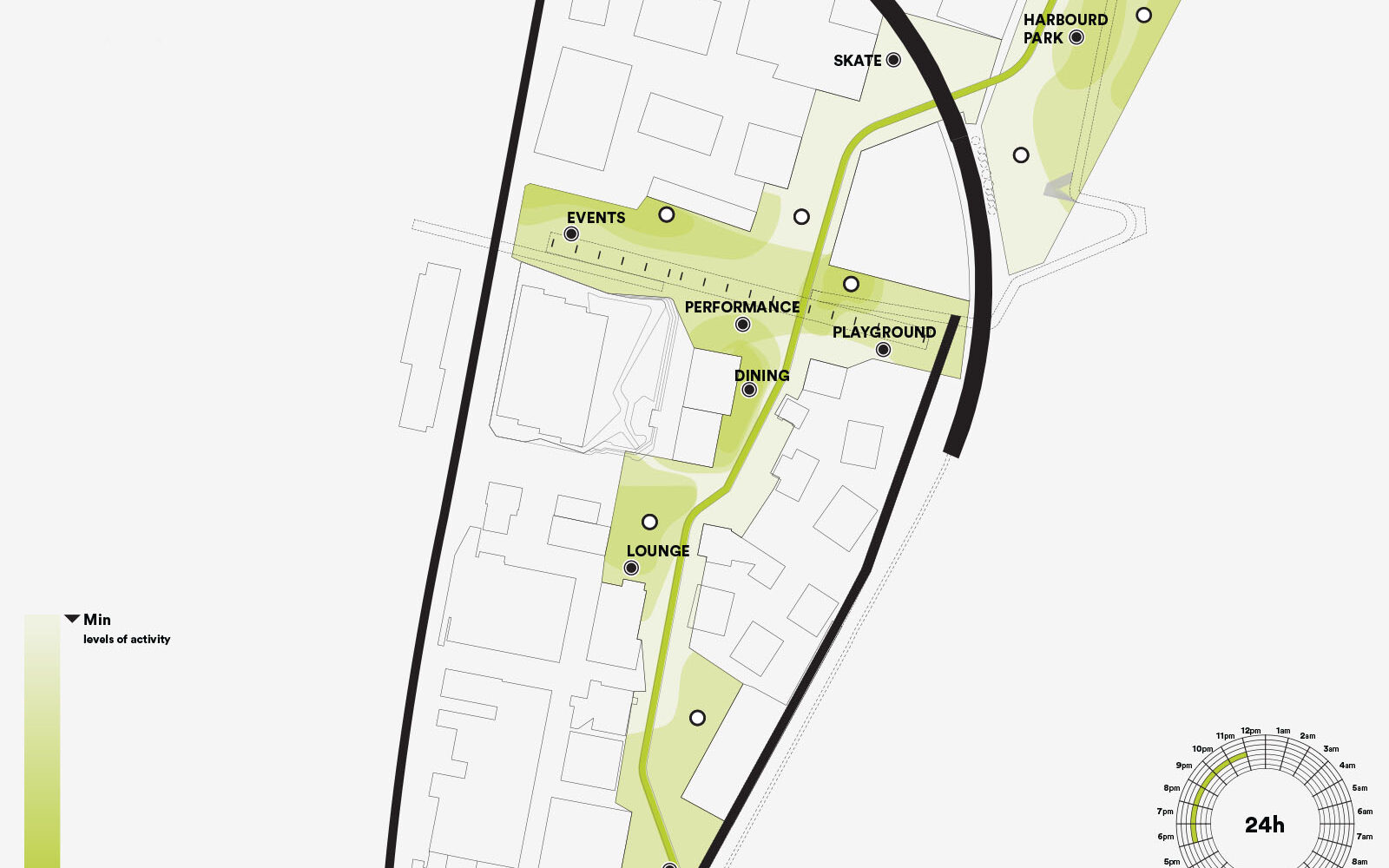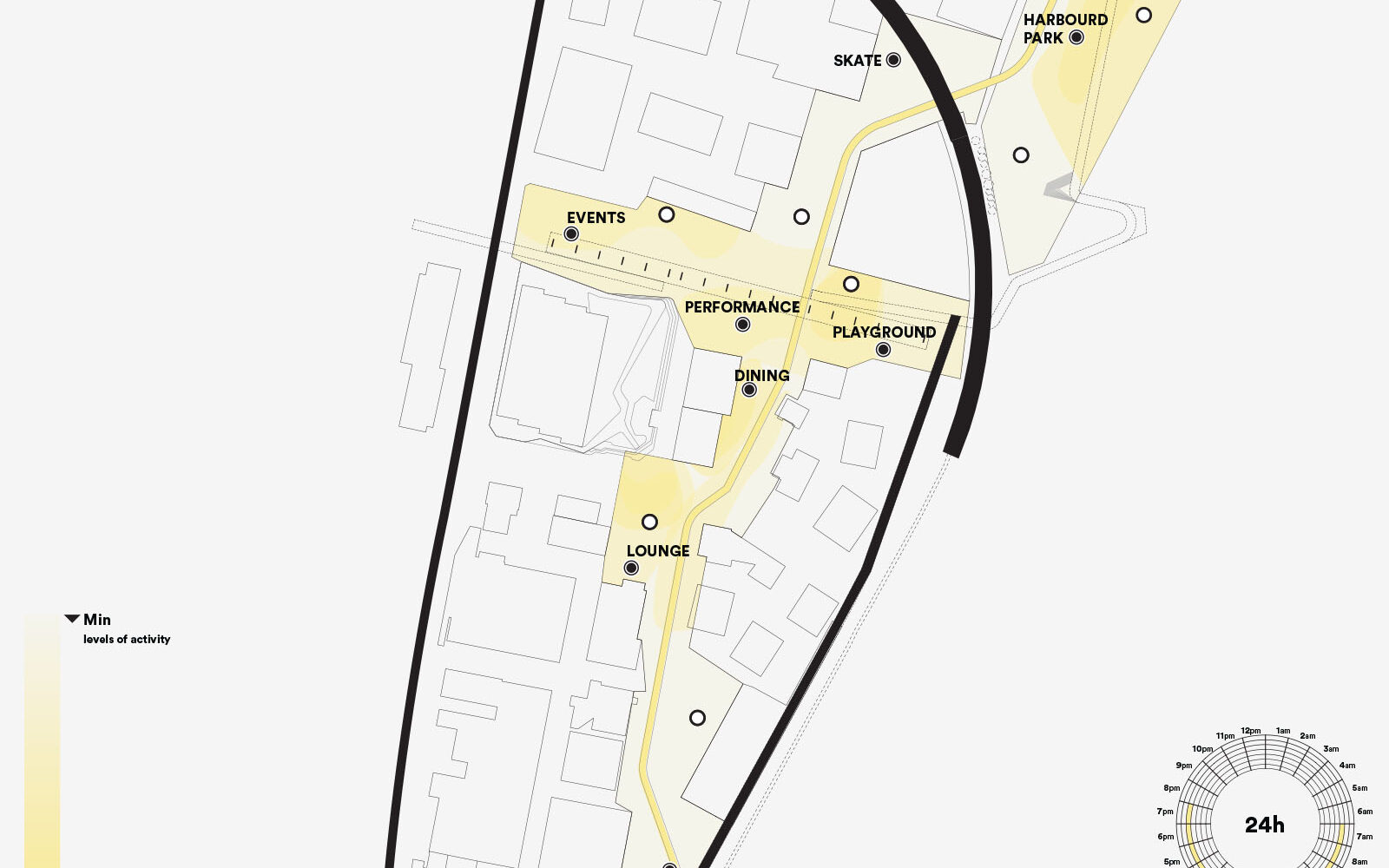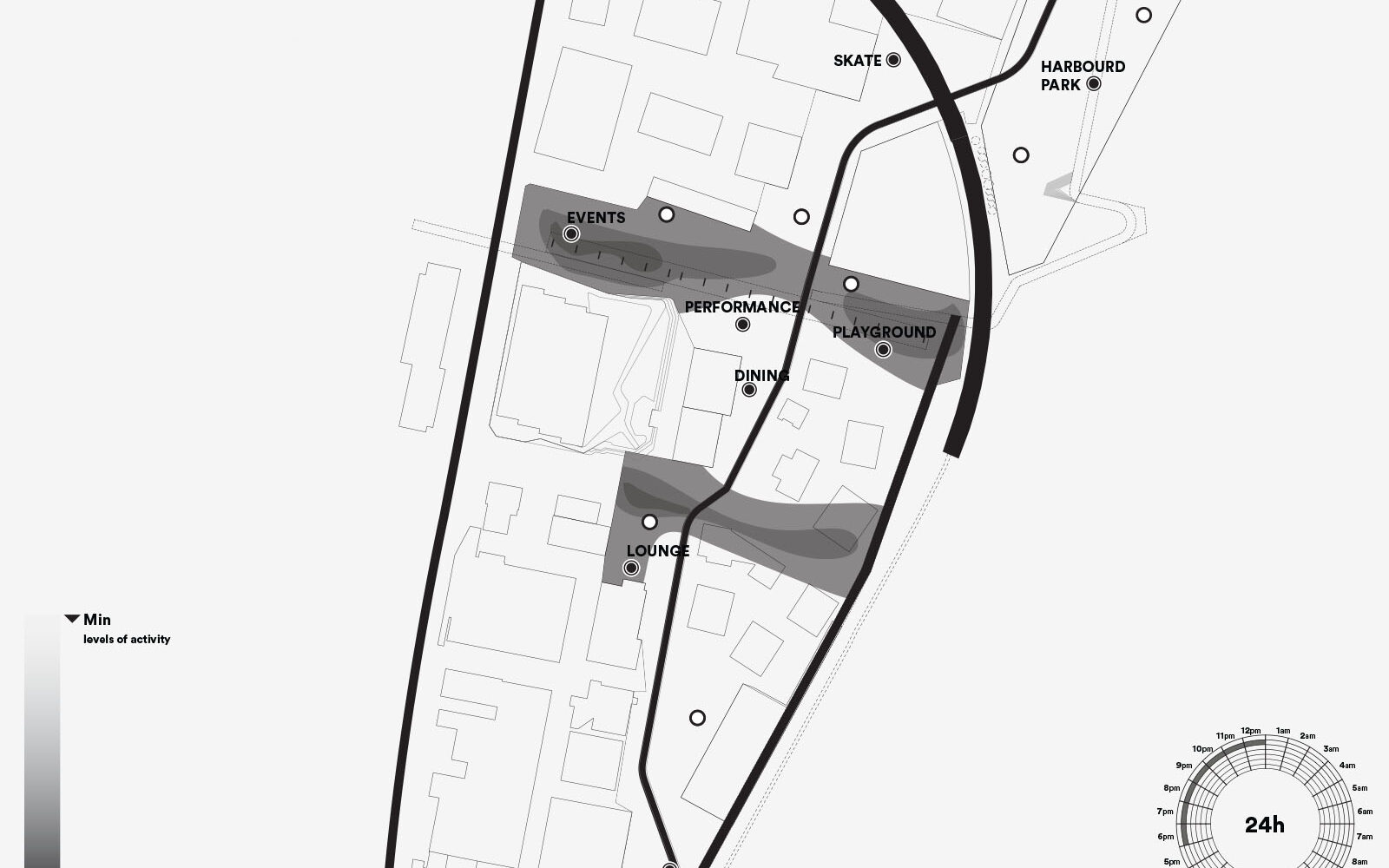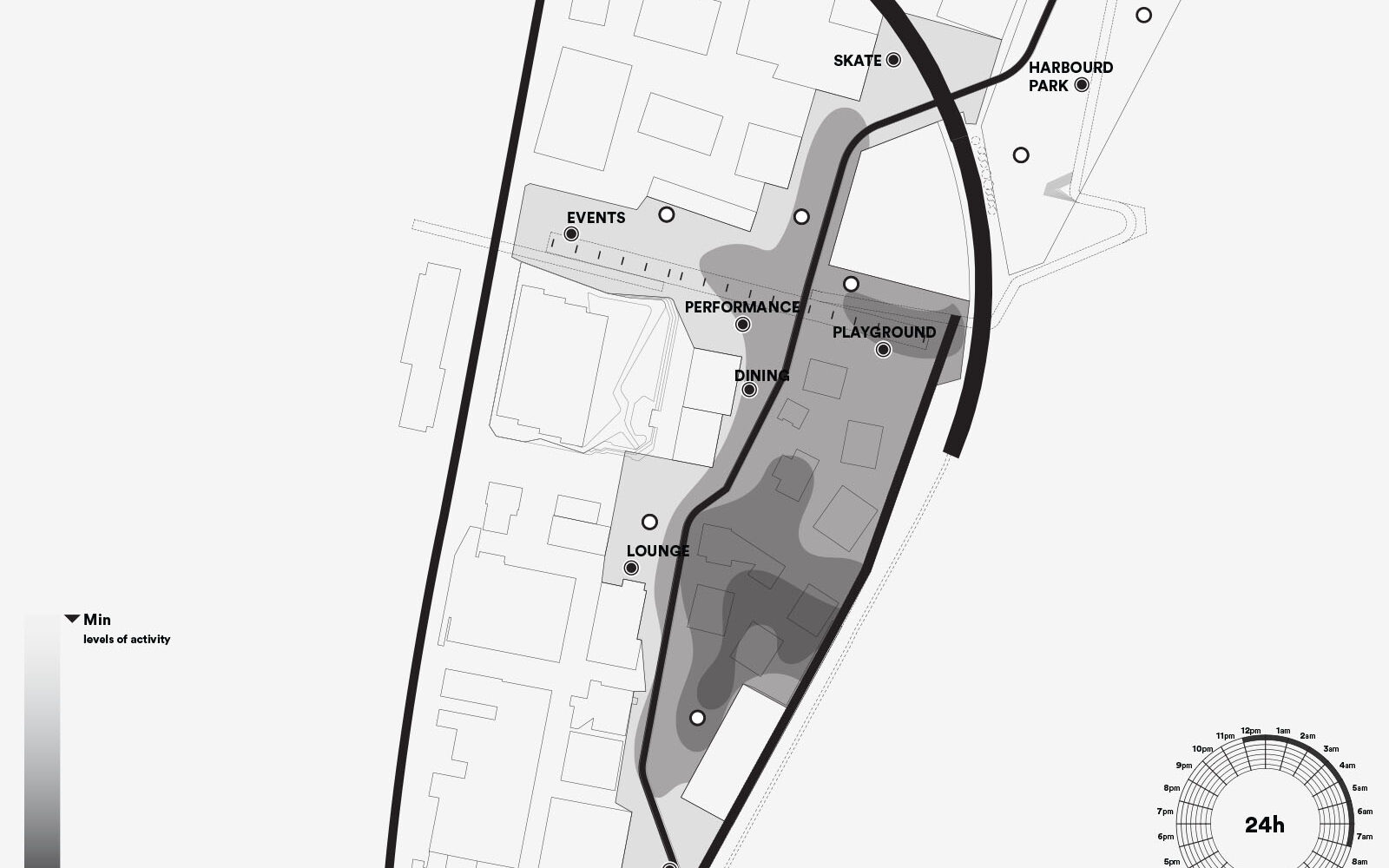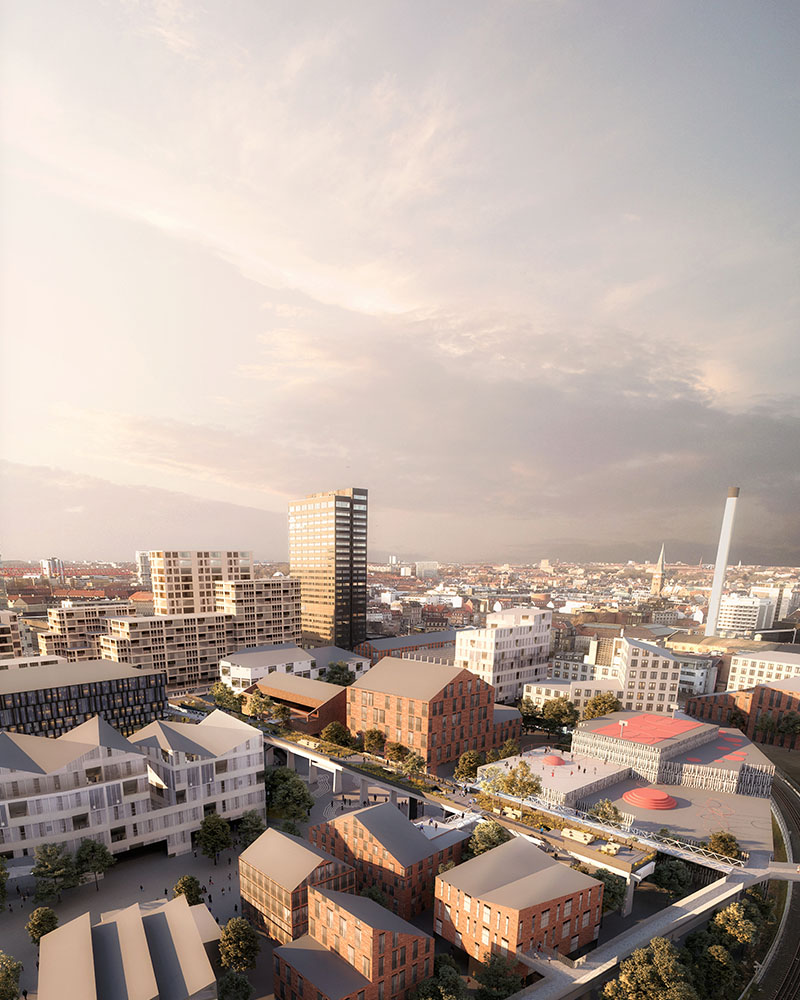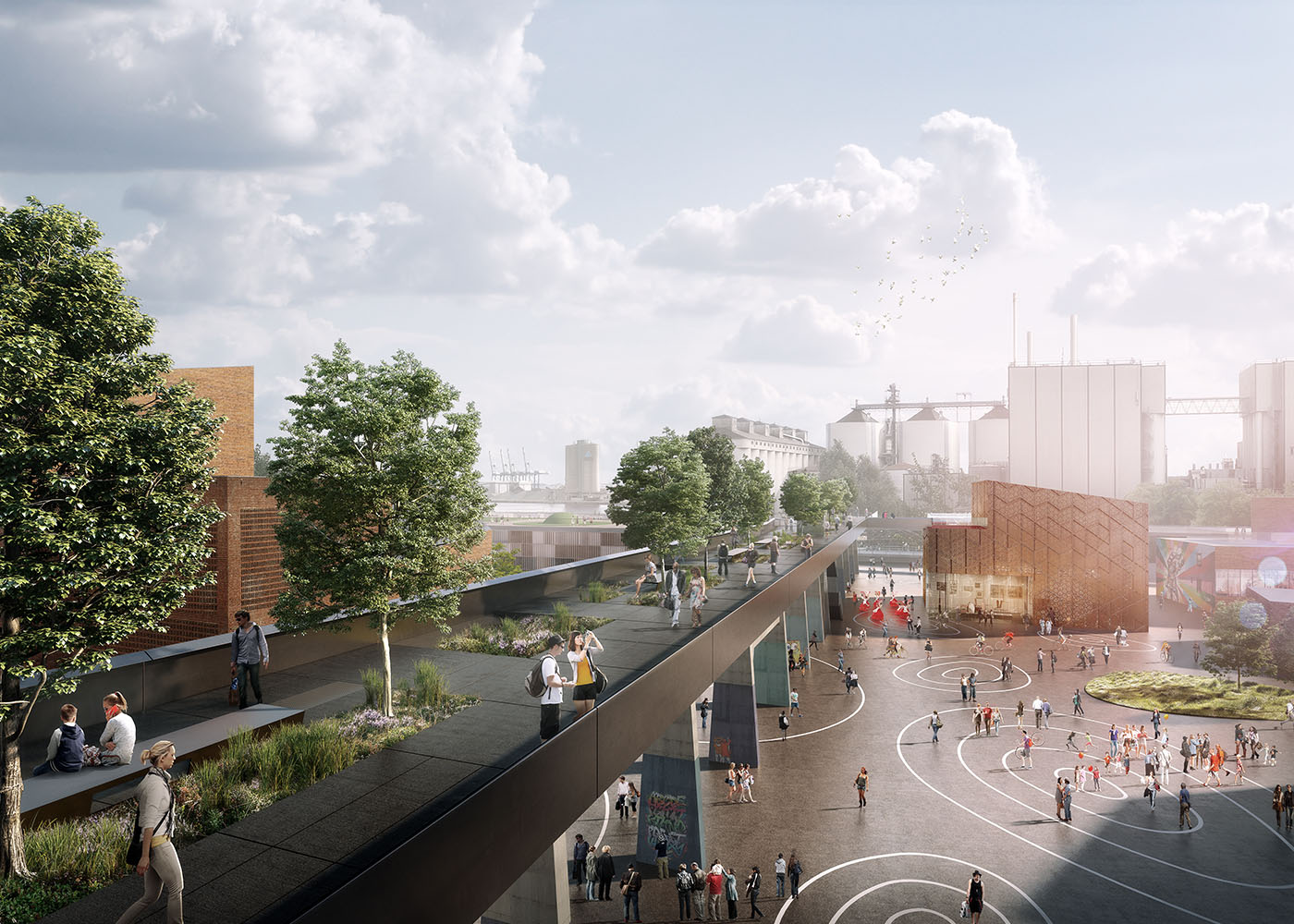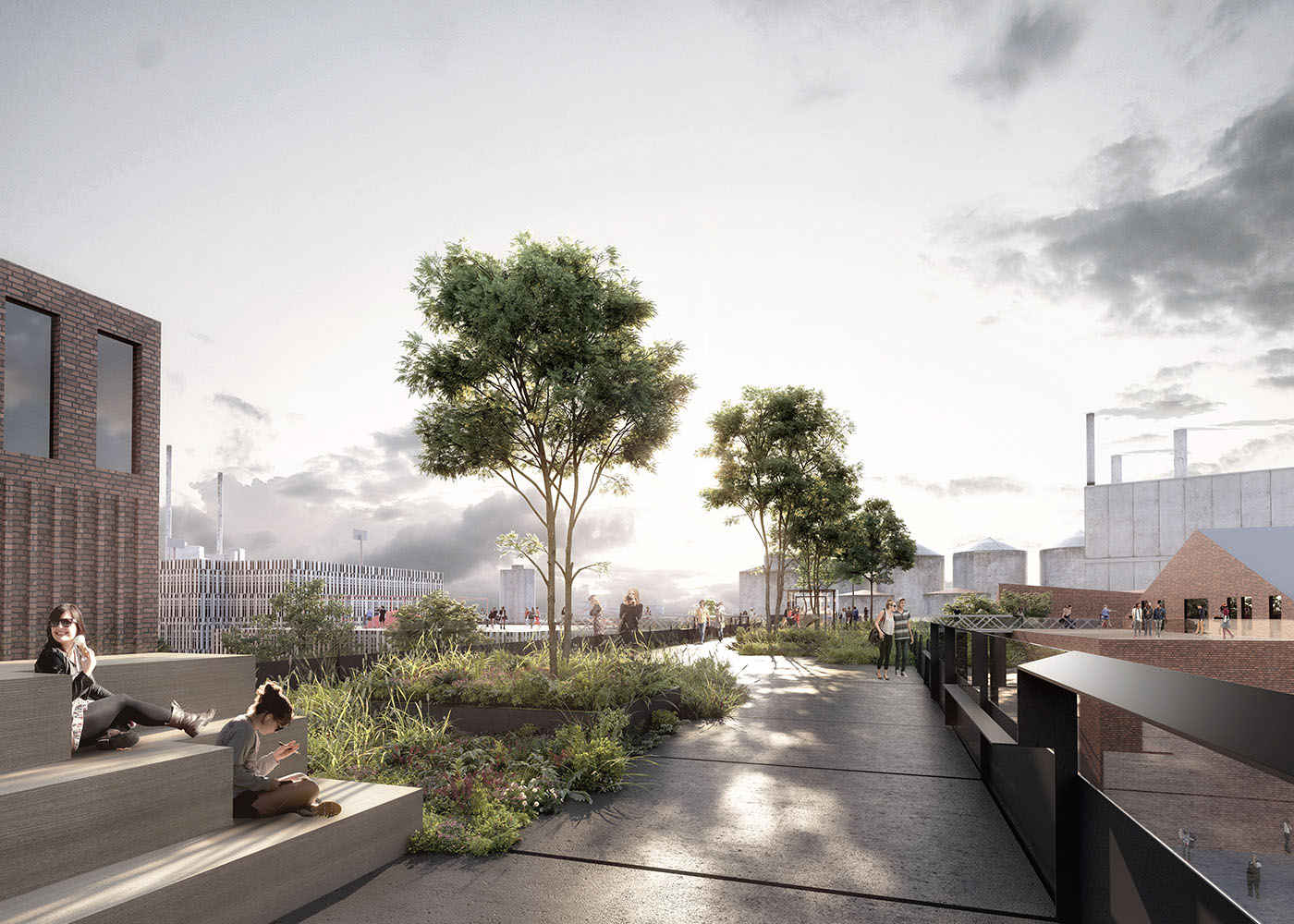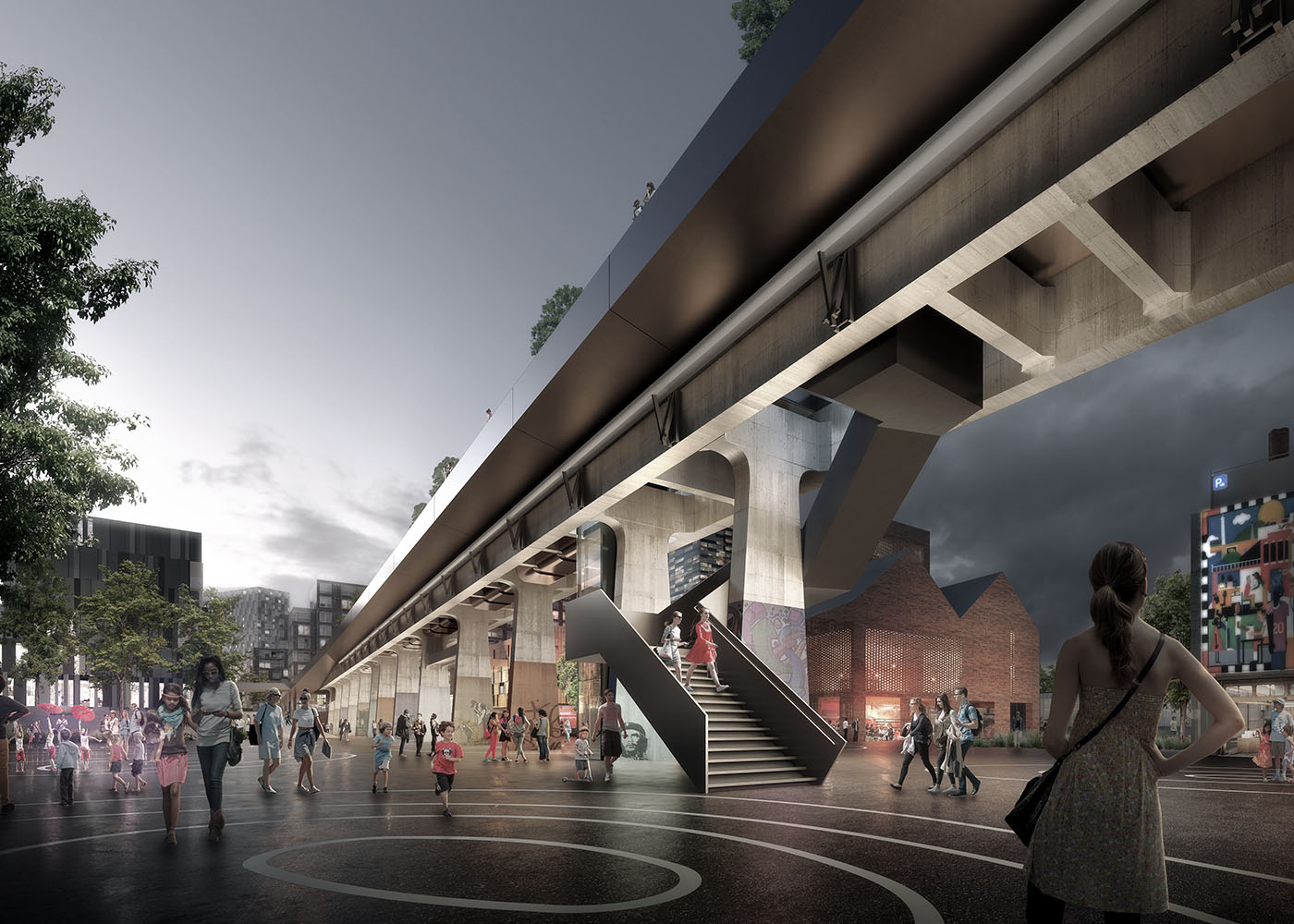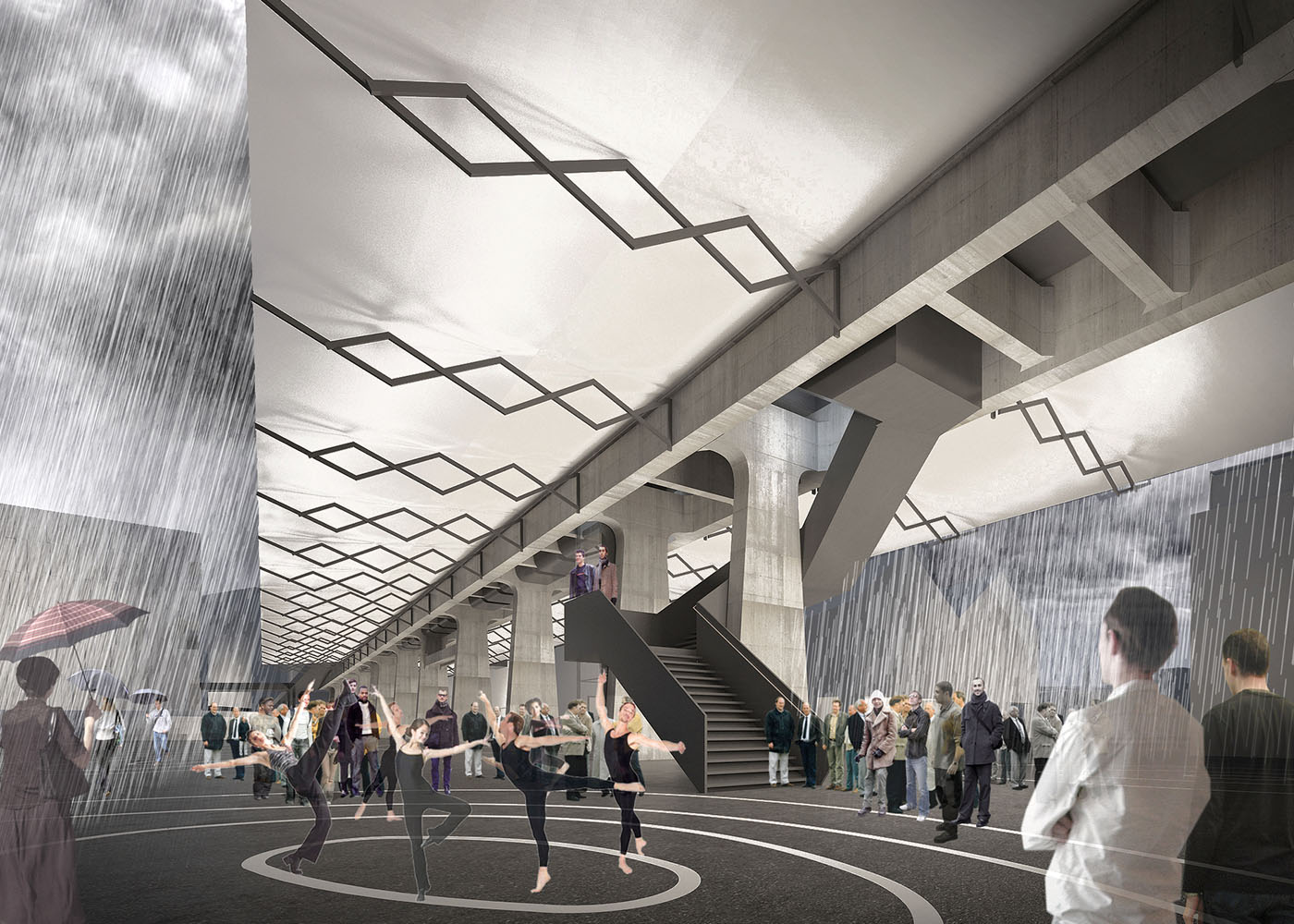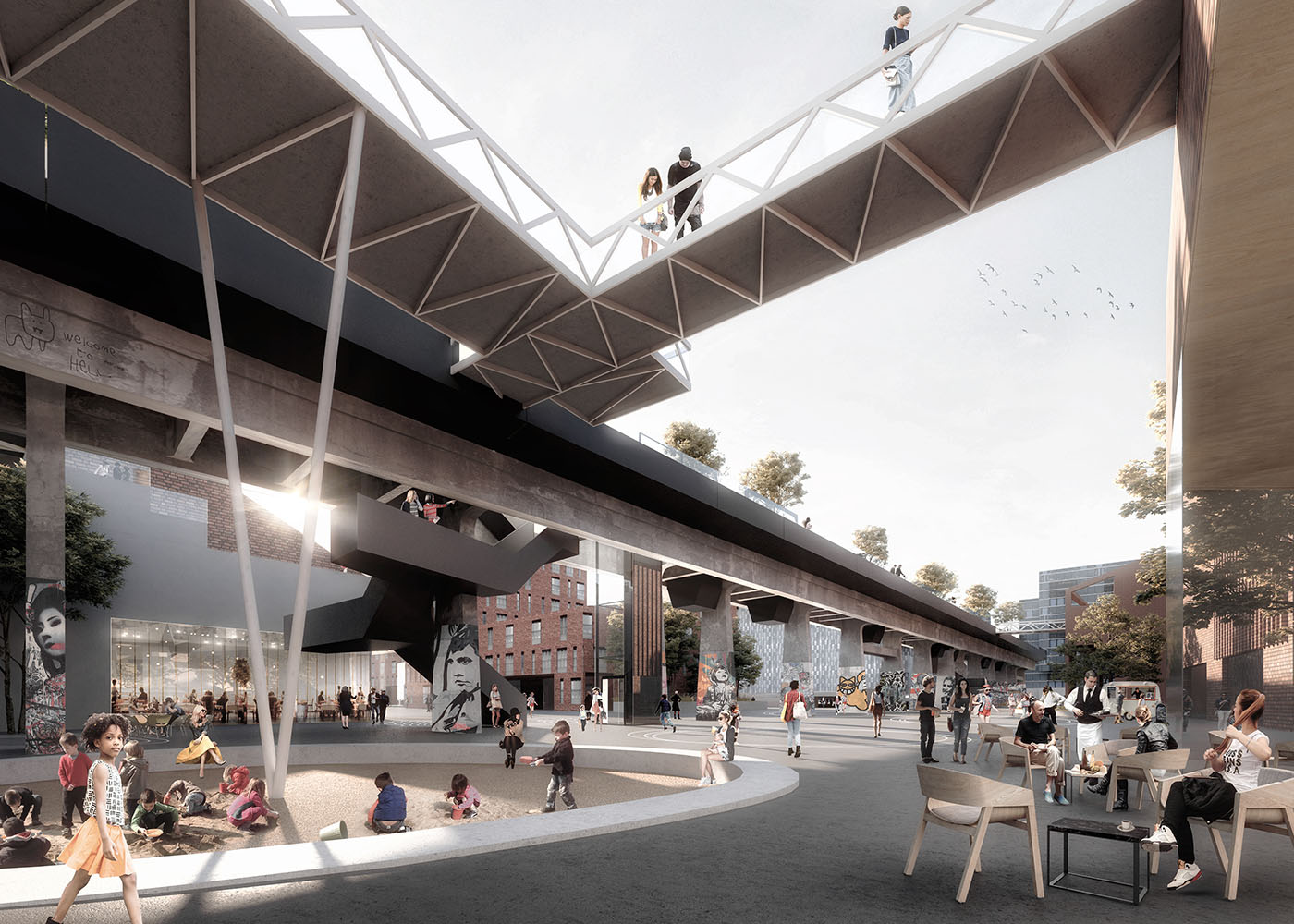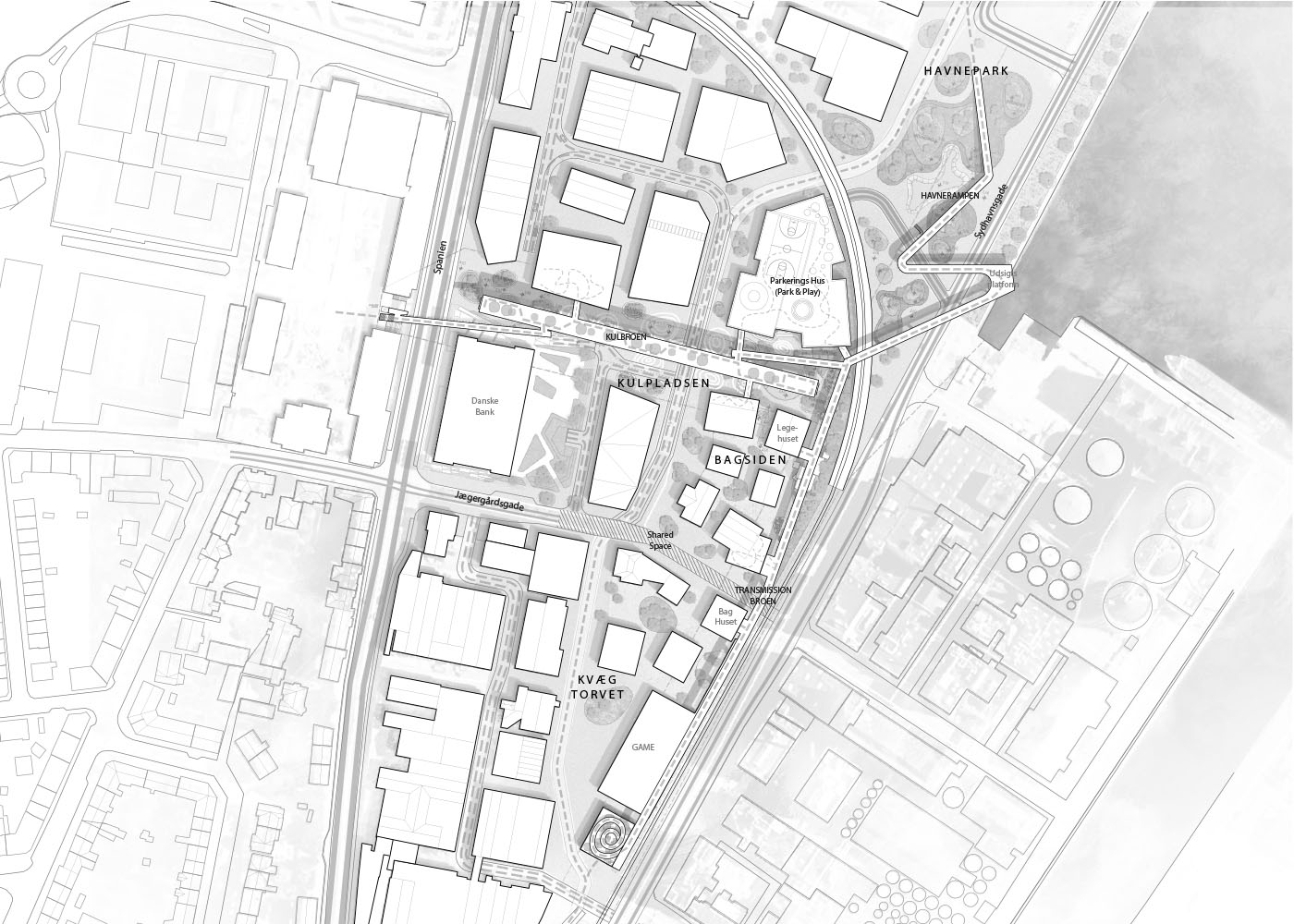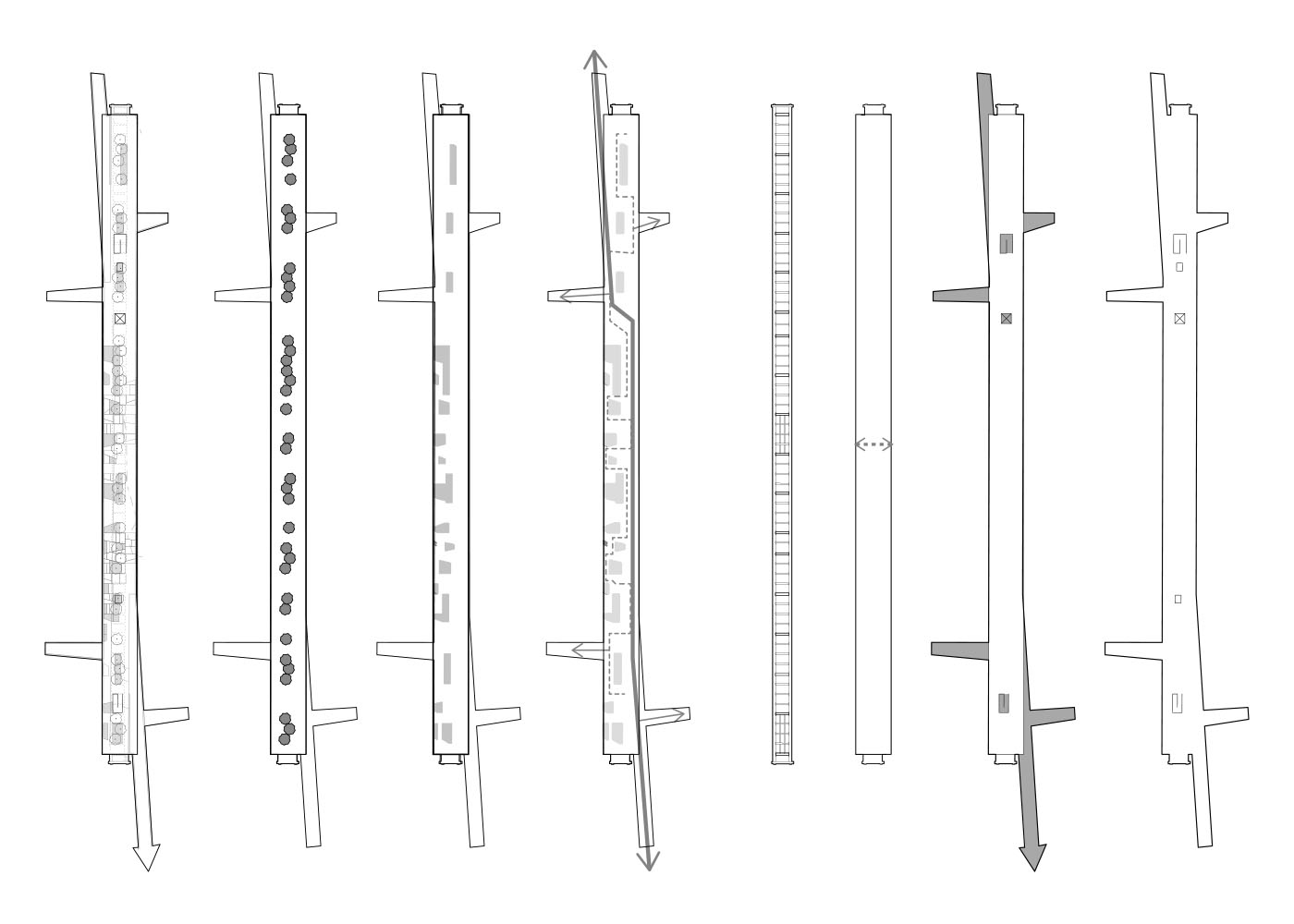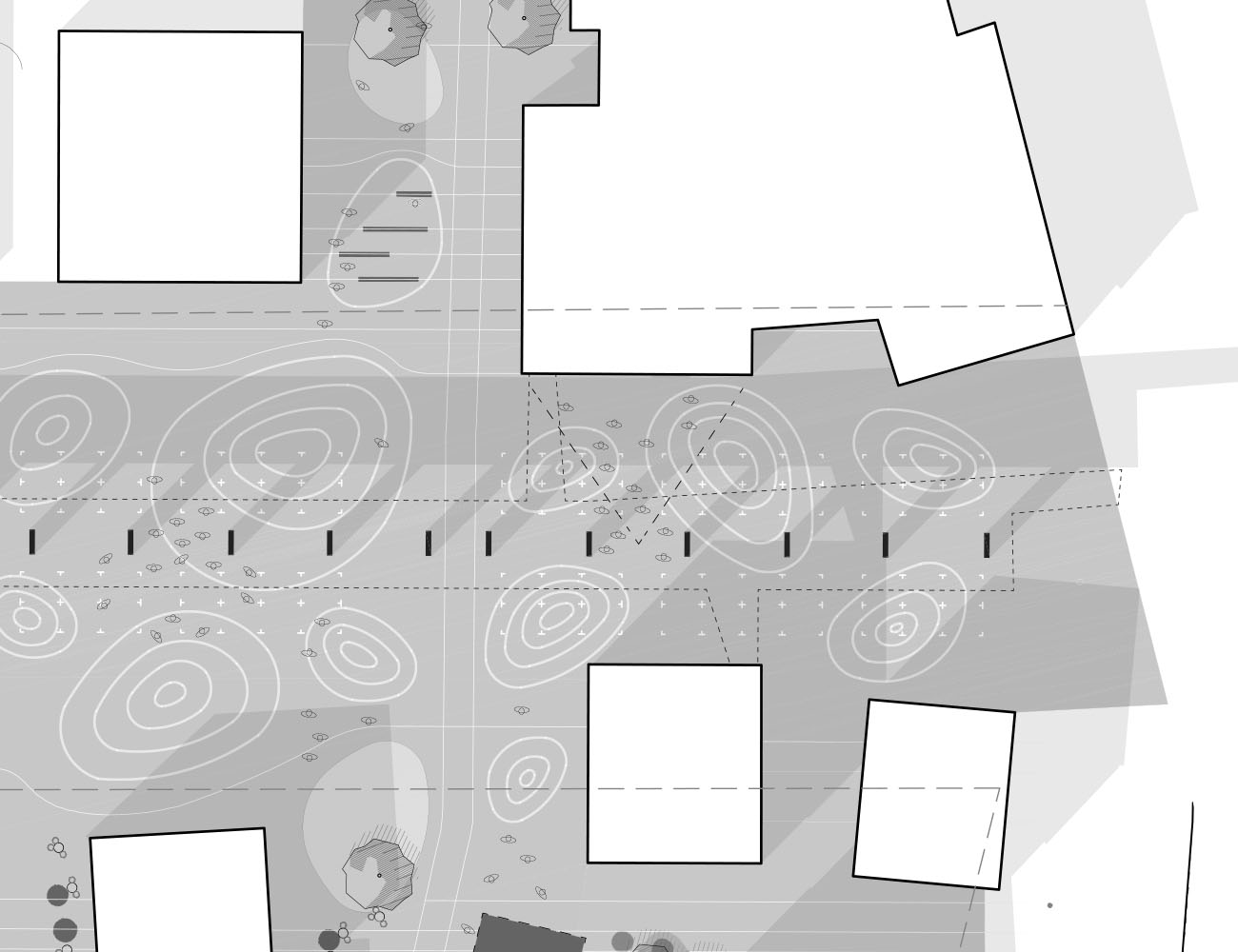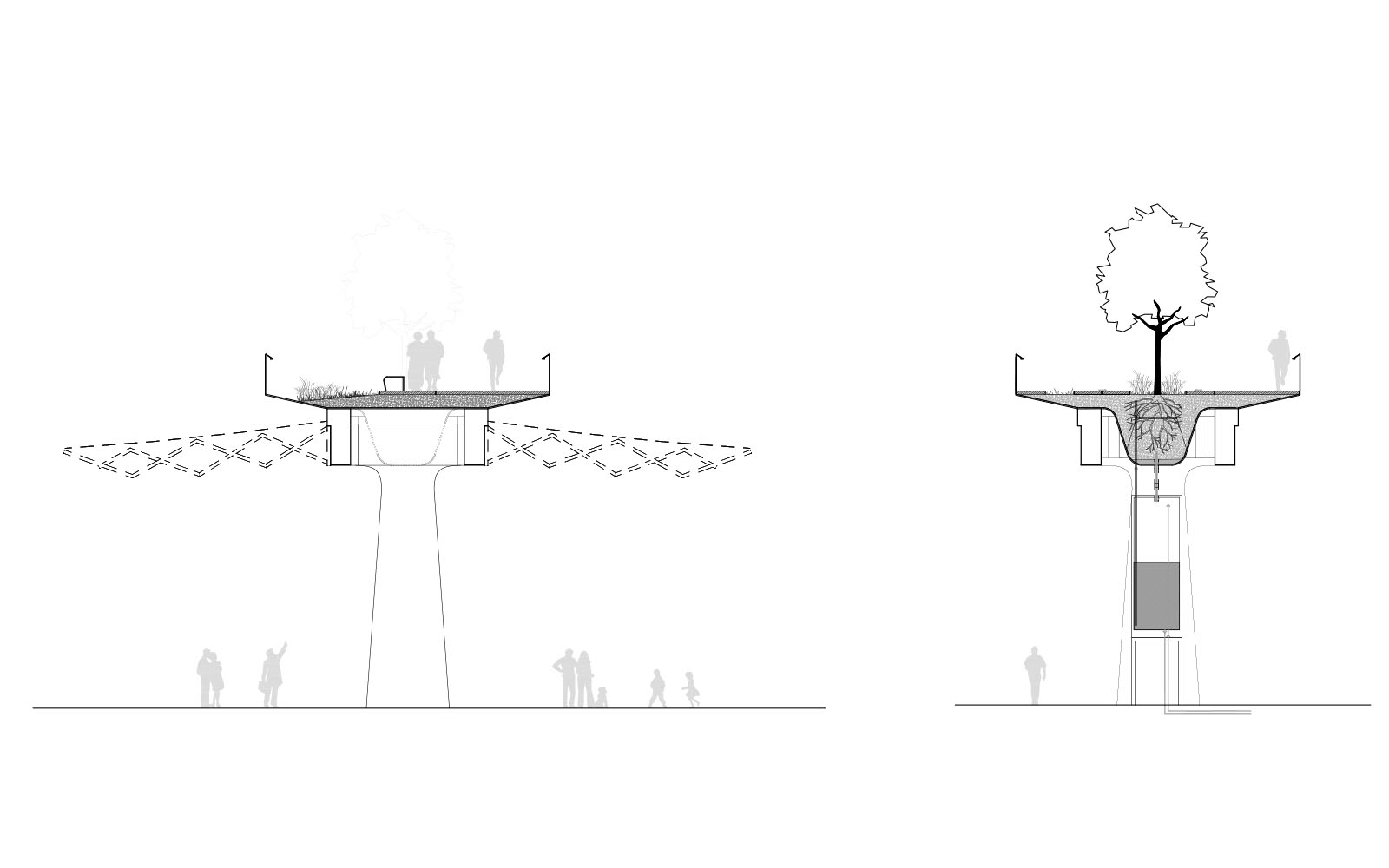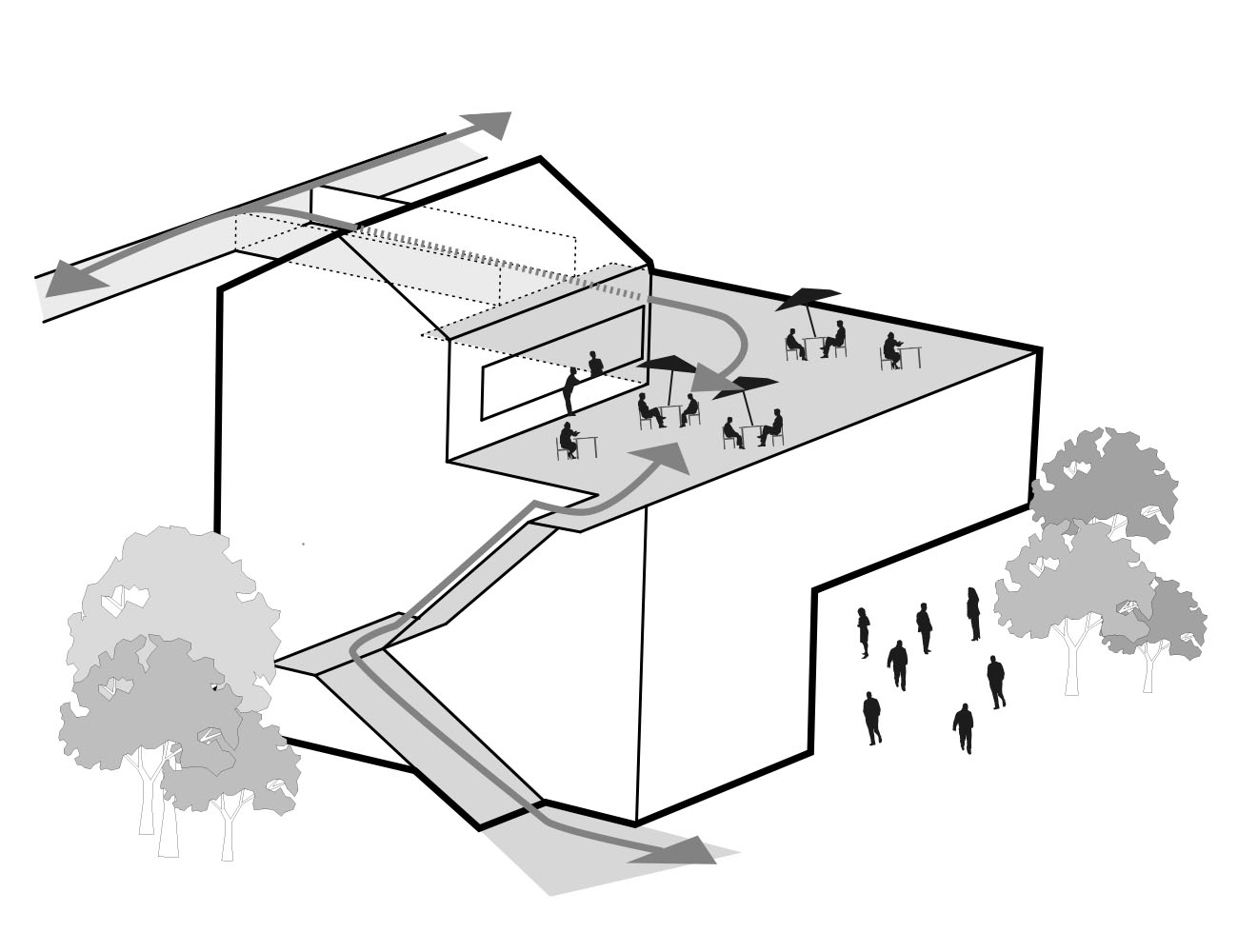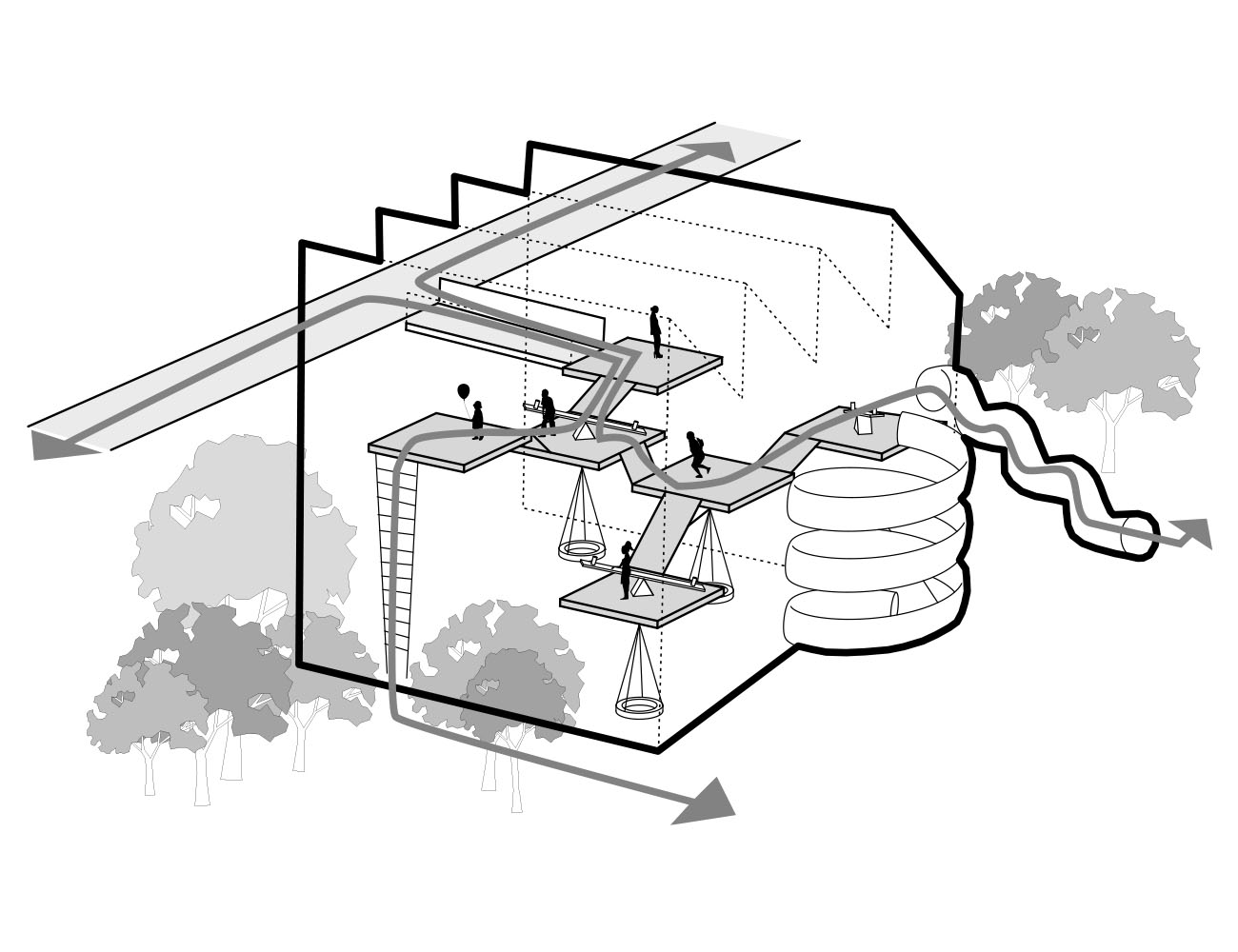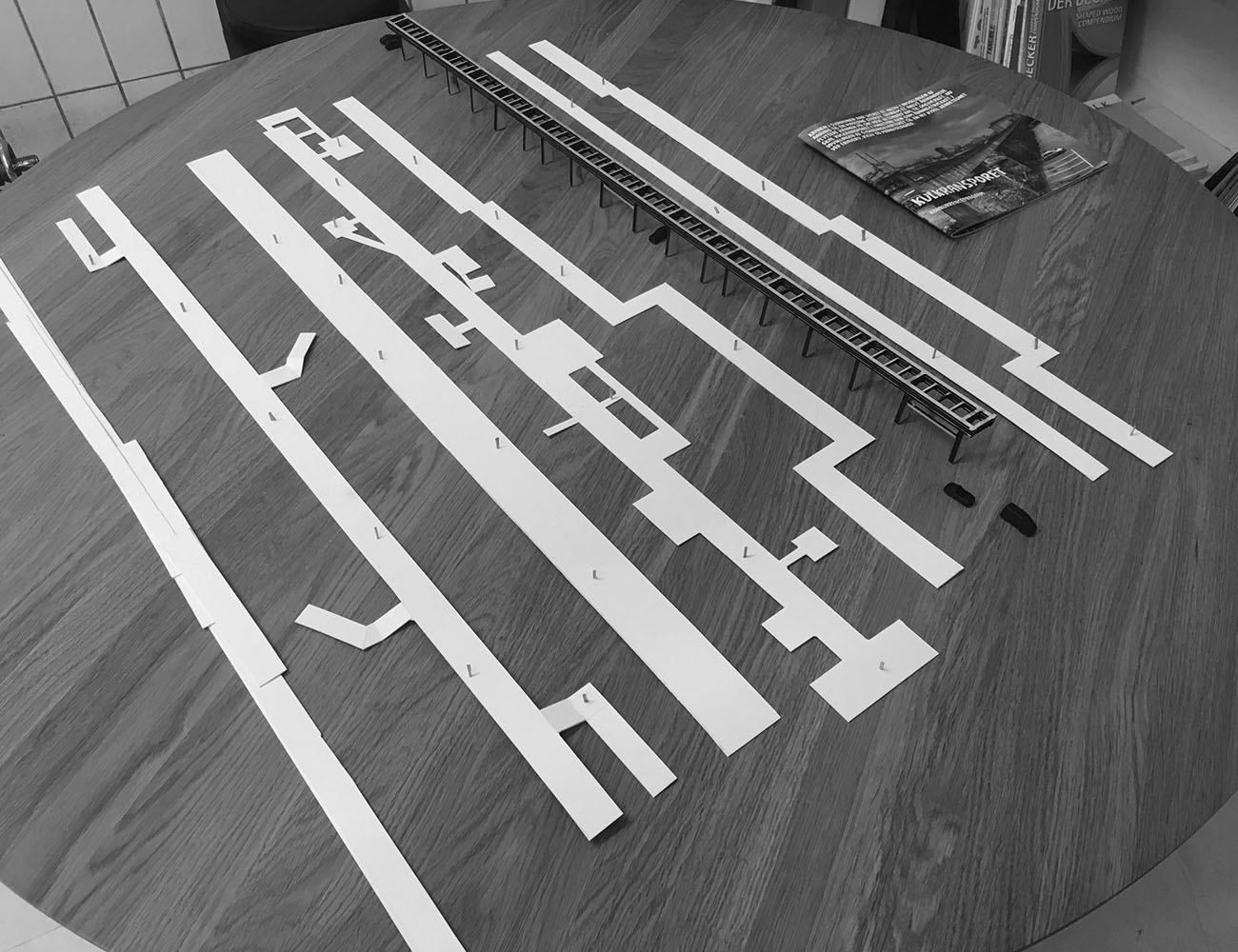-
A transformation at multiple scales
Kulkransporet
TERROIR together with LATZ & Partner and ISC Engineering were second in this international, 3-stage competition for the redevelopment of the Sydhavn Precinct in Aarhus. Central to the site was the old Coal Bridge – a concrete rail upon which a mobile crane moved coal back and forth across the site. Despite the focus on the bridge, the project anticipated a 300,000 square metre redevelopment of the precinct, film studios and start-up centre while maintaining its role as a hub for homeless people in the city. At the same time, the City had approved – paradoxically given the other proposed uses – the location of the new Danske Bank Headquarters adjacent to the bridge. The site – wedged between a major cutting and a power plant – had serious challenges in terms of connectivity but also in the location and organisation of viable redevelopment sites.
Our team’s strategy focused on understanding the bridge in the context of the reorganisation of the whole site, considering it in the larger context of the Aarhus coast to the south and north and how this slightly isolated but well-located precinct might contribute to the city as a whole. With key connectivity matters understood, we then worked with varying plot sizes to ensure diverse forms of occupation, including an attempt to make sense of a bank headquarters (building footprint, occupants, public domain constraints) in this neighbourhood.
- TYPE Masterplan | Urban Renewal
- LOCATION Aarhus | DK
- YEAR 2017
- WITH
APPROACH
To enable this transformation, the bridge itself was addressed in three ways, all of which intended to increase the amount of public domain in what is to become a crowded and arguably over-developed area and also to increase the use of the bridge and surrounds. Firstly, the major site carpark was located at the far end of the bridge, adjacent to the main road and brought the bridge into the centre of the connectivity project. Secondly, the bridge itself was used as more than a circulation path, but was capped with a giant steel vessel, like a boat, that contained both planting and a greatly expanded width, more a piazzette than a gallery. The extended width of the vessel allowed the space below the bridge to be used as a covered area for events, while above, a garden in the sky would provide shelter for those crossing the site. Finally, the importance of the bridge in historical terms led to its use as the organiser of a buffer zone around it, resulting in a large and robust public plaza that was intended to have a multitude of uses.
